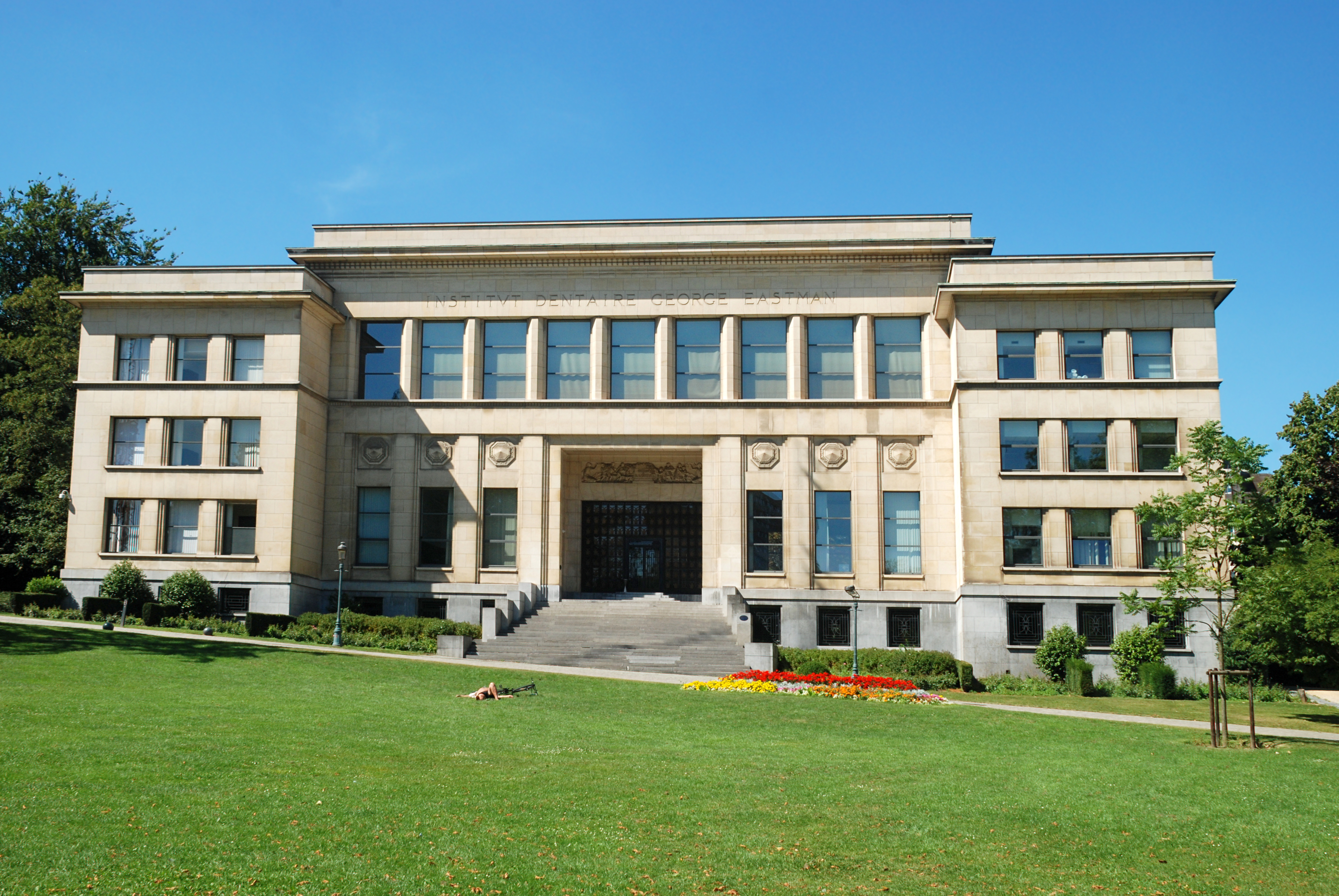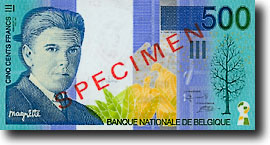|
Brussels International Exposition (1935)
The Brussels International Exposition of 1935 (french: Exposition Universelle et Internationale de Bruxelles de 1935, nl, Brusselse Wereldtentoonstelling van 1935) was a world's fair held between 27 April and 6 November 1935 on the Heysel/Heizel Plateau in Brussels, Belgium. History The 1935 World's Fair was the tenth world's fair hosted by Belgium, and the fourth in Brussels, following the fairs in 1888, 1897 and 1910. Officially sanctioned by the Bureau International des Expositions (BIE), twenty-five countries officially participated and a further five were unofficially represented. The theme was colonisation, on the 50th anniversary of the establishment of the Congo Free State. The exhibition attracted some twenty million visitors. The Belgian architect Joseph van Neck was the principal architect of the fair and of the Art Deco ''Palais des Expositions'' (also known as the ''Grand Palais''), with its interior concrete parabolic arches, and four heroic bronze statues ... [...More Info...] [...Related Items...] OR: [Wikipedia] [Google] [Baidu] |
Brussels
Brussels (french: Bruxelles or ; nl, Brussel ), officially the Brussels-Capital Region (All text and all but one graphic show the English name as Brussels-Capital Region.) (french: link=no, Région de Bruxelles-Capitale; nl, link=no, Brussels Hoofdstedelijk Gewest), is a region of Belgium comprising 19 municipalities, including the City of Brussels, which is the capital of Belgium. The Brussels-Capital Region is located in the central portion of the country and is a part of both the French Community of Belgium and the Flemish Community, but is separate from the Flemish Region (within which it forms an enclave) and the Walloon Region. Brussels is the most densely populated region in Belgium, and although it has the highest GDP per capita, it has the lowest available income per household. The Brussels Region covers , a relatively small area compared to the two other regions, and has a population of over 1.2 million. The five times larger metropolitan area of Brusse ... [...More Info...] [...Related Items...] OR: [Wikipedia] [Google] [Baidu] |
Parabolic Arches
A parabolic arch is an arch in the shape of a parabola.Article about parabolic arch by The Free DictionaryParabolic arch , Article about parabolic arch by The Free Dictionary accessdate: March 2, 2017 In structures, their curve represents an efficient method of load, and so can be found in bridges and in architecture in a variety of forms. Description The mathematics While a parabolic arch may resemble a catenary arch, a parabola is a quadratic function while a catenary is the hyperbolic cosine, , a sum of two exponential functions. One parabola is , and hyperbolic cosine is . The curves are unrelated. The line of thrust Unlike a catenary arch, the parabolic arch employs the principle that when weight is uniformly applied above, the internal compression (see line of thrust) resulting from that weight will follow a parabolic curve. Of all arch types, the parabolic arch produces the most thrust at the base. Also, it can span the widest area. It is commonly used in bridge design, ... [...More Info...] [...Related Items...] OR: [Wikipedia] [Google] [Baidu] |
1935 In Belgium
Events in the year 1935 in Belgium. Incumbents :Monarch – Leopold III :Prime Minister – Georges Theunis (to 25 March); Paul van Zeeland (from 25 March) Events * 27 April to 6 November – Brussels International Exposition (1935) held in Heysel, near Brussels. Publications * Emile Cammaerts, ''Albert of Belgium, Defender of Right'' (New York, Macmillan Co.) at Internet Archive. Art and architecture  * Michel Polak's Eastman Buildin ...
* Michel Polak's Eastman Buildin ...
[...More Info...] [...Related Items...] OR: [Wikipedia] [Google] [Baidu] |
Brussels Expo
The Brussels Exhibition Centre (french: Parc des Expositions de Bruxelles, nl, Tentoonstellingspark van Brussel), also known as Brussels Expo, is the most important event complex in Brussels, Belgium. Located on the Heysel Plateau, Heysel/Heizel Plateau in Laeken (northern part of the City of Brussels), the twelve halls that comprise it are used for the largest national and international trade fairs, exhibitions and other events. With of facility space, they constitute the largest exhibition space in the Benelux. They are also a remarkable witness to the evolution of construction techniques during the 20th century. History The construction of the Brussels Exhibition Centre began in 1931, when five halls were built for the Brussels International Exposition (1935), Brussels International Exposition of 1935 to celebrate the centenary of Belgian Revolution, Belgian Independence. The Palais 5/Paleis 5, informally known as the Centenary Palace (french: Palais du Centenaire, link=no, ... [...More Info...] [...Related Items...] OR: [Wikipedia] [Google] [Baidu] |
Leo Marfurt
Leo Marfurt (1894–1977) was a Swiss-Belgian commercial artist, best known for his posters of the 1930s, in an innovative Art Deco style that sometimes incorporated elements of Futurism, Cubism and Surrealism. Life Marfurt was born in Aarau, Switzerland, in 1894. He moved to Belgium in 1921, marrying there in 1922. In 1927 Marfurt set up his own business in Brussels under the name ''Les Créations Publicitaires'' ("Advertising Creations"). His customers included the Brussels World Fairs of 1935 and 1958, Minerva Minerva (; ett, Menrva) is the Roman goddess of wisdom, justice, law, victory, and the sponsor of arts, trade, and strategy. Minerva is not a patron of violence such as Mars, but of strategic war. From the second century BC onward, the Rom ... automobiles, Chrysler, Belga cigarettes, cross-channel ferries, and railways in both Belgium and the United Kingdom. He died in Antwerp in 1977. Exhibitions An exhibition of Leo Marfurt's posters advertising gins ... [...More Info...] [...Related Items...] OR: [Wikipedia] [Google] [Baidu] |
Expo '58
Expo 58, also known as the 1958 Brussels World's Fair (french: Exposition Universelle et Internationale de Bruxelles de 1958, nl, Brusselse Wereldtentoonstelling van 1958), was a world's fair held on the Heysel/Heizel Plateau in Brussels, Belgium, from 17 April to 19 October 1958. It was the first major world's fair registered under the Bureau International des Expositions (BIE) after World War II. Background Expo 58 was the eleventh world's fair hosted by Belgium, and the fifth in Brussels, following the fairs in 1888, 1897, 1910 and 1935. In 1953, Belgium won the bid for the next world's fair, winning out over other European capitals such as Paris and London. Nearly 15,000 workers spent three years building the site on the Heysel/Heizel Plateau, north-west of central Brussels. Many of the buildings were re-used from the 1935 World's Fair, which had been held on the same site. The theme of Expo 58 was ''"Bilan du monde, pour un monde plus humain"'' (in English: "Evalu ... [...More Info...] [...Related Items...] OR: [Wikipedia] [Google] [Baidu] |
Louis Van Lint
Louis Van Lint (December 26, 1909 – December 27, 1986) was a Belgian painter, major figure of the Belgian post-war abstraction. Biography Louis Van Lint studied painting at the Academy of Saint-Josse-ten-Noode (Brussels) under Henry Ottevaere and Jacques Maes until 1939. He studied sculpture and architecture as well. His early work reflects a traditional figurative painting style with a unique sense of color. In 1940 he founded the group "La Route Libre" with Gaston Bertrand and Anne Bonnet. His art was influenced to some degree by the animist movement, but he eventually broke away with the presentation of his painting, The Flayed Body (L'Ecorche, 1943), a shocking expression of his wish for more artistic freedom that consequently sounded a revolt against animism. As his style matured, he switched to abstraction in which he excelled as colorist and master of form. After World War II he co-founded The Young Belgian Painters (La Jeune Peinture Belge) with Gaston Bertrand, ... [...More Info...] [...Related Items...] OR: [Wikipedia] [Google] [Baidu] |
René Magritte
René François Ghislain Magritte (; 21 November 1898 – 15 August 1967) was a Belgian surrealist artist known for his depictions of familiar objects in unfamiliar, unexpected contexts, which often provoked questions about the nature and boundaries of reality and representation. His imagery has influenced pop art, minimalist art, and conceptual art. Early life René Magritte was born in Lessines, in the province of Hainaut, Belgium, in 1898. He was the oldest son of Léopold Magritte, a tailor and textile merchant,Meuris 1991, p 216. and Régina (née Bertinchamps), who was a milliner before she got married. Little is known about Magritte's early life. He began lessons in drawing in 1910. On 24 February 1912, his mother committed suicide by drowning herself in the River Sambre at Châtelet. It was not her first suicide attempt. Her body was not discovered until 12 March.Abadie 2003, p. 274. According to a legend, 13-year-old Magritte was present when her body was retrieved ... [...More Info...] [...Related Items...] OR: [Wikipedia] [Google] [Baidu] |
Paul Delvaux
Paul Delvaux (; 23 September 1897 – 20 July 1994) was a Belgian painter noted for his dream-like scenes of women, classical architecture, trains and train stations, and skeletons, often in combination. He is often considered a surrealist, although he only briefly identified with the Surrealist movement. He was influenced by the works of Giorgio de Chirico and René Magritte, but developed his own fantastical subjects and hyper-realistic styling, combining the detailed classical beauty of academic painting with the bizarre juxtapositions of surrealism. Throughout his long career, Delvaux explored "Nude and skeleton, the clothed and the unclothed, male and female, desire and horror, eroticism and death – Delvaux's major anxieties in fact, and the greater themes of his later work ... Early life and education Delvaux was born on 23 September 1897 in Antheit (now part of Wanze) in the Belgian province of Liège. His parents lived in Brussels, but his mother went to her own mo ... [...More Info...] [...Related Items...] OR: [Wikipedia] [Google] [Baidu] |
Leopold II Of Belgium
* german: link=no, Leopold Ludwig Philipp Maria Viktor , house = Saxe-Coburg and Gotha , father = Leopold I of Belgium , mother = Louise of Orléans , birth_date = , birth_place = Brussels, Belgium , death_date = , death_place = Laeken, Brussels, Belgium , burial_place = Church of Our Lady of Laeken , religion = Roman Catholicism Leopold II (french: link=no, Léopold Louis Philippe Marie Victor, nl, Leopold Lodewijk Filips Maria Victor; 9 April 1835 – 17 December 1909) was the second King of the Belgians from 1865 to 1909 and the self-made autocratic ruler of the Congo Free State from 1885 to 1908. Born in Brussels as the second but eldest-surviving son of Leopold I and Louise of Orléans, Leopold succeeded his father to the Belgian throne in 1865 and reigned for exactly 44 years until his death, the longest reign of a Belgian monarch to date. He died without surviving legitimate sons. The current Belgian king descends from his ne ... [...More Info...] [...Related Items...] OR: [Wikipedia] [Google] [Baidu] |
Victor Bourgeois
Victor Bourgeois (29 August 1897 – 24 July 1962) was a Belgium, Belgian architect and urban planner, considered the greatest Belgian modernist architect. Bourgeois was born in Charleroi and studied at the Académie Royale des Beaux-Arts, Royal Academy of Fine Arts in Brussels from 1914 through 1918, and was mentored by Henry van de Velde. Together with his brother Pierre Bourgeois, he founded several magazines, including ''7 Arts'' (1922–1928). In 1927 Bourgeois became the only Belgian invited to design a house for the Weissenhof Estate exhibition in Stuttgart, and the following year Bourgeois was a delegate to the first meeting of the Congrès International d'Architecture Moderne, Congrès international d'architecture moderne and a founding member of that organization. He died on 24 July 1962 in Ixelles. Cité Moderne Bourgeois's first important architectural work was a group of houses in the Rue du Cubisme in Koekelberg (Brussels Region), showing the direct influence o ... [...More Info...] [...Related Items...] OR: [Wikipedia] [Google] [Baidu] |




